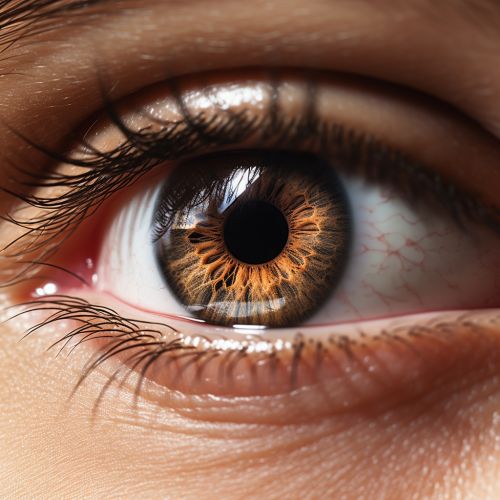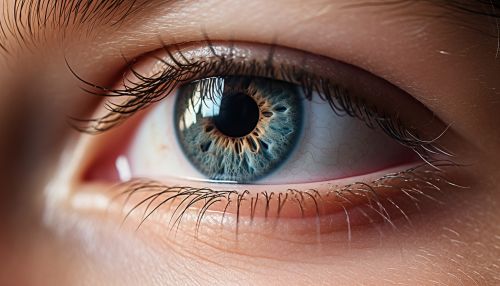Retinoblastoma
Overview
Retinoblastoma is a rare form of cancer that rapidly develops from the immature cells of a retina, the light-detecting tissue of the eye. It is the most common primary malignant intraocular cancer in children, and it is almost exclusively found in young children.
Symptoms
The most common and often earliest symptom of retinoblastoma is a noticeable change in the appearance of the eye, with a white glow, known as leukocoria, visible in the pupil in certain lighting conditions. Other symptoms can include a red and irritated eye, poor vision, and a squint.


Causes
Retinoblastoma is caused by a mutation in the RB1 gene. This gene is a tumor suppressor gene, which means it regulates cell division by keeping cells from growing and dividing too rapidly or in an uncontrolled way. When mutations occur in this gene, it can lead to uncontrolled cell growth and the development of a cancerous tumor.
Diagnosis
Diagnosis of retinoblastoma involves a thorough examination of the eye, often under general anesthesia. This examination can include an ultrasound of the eye, a MRI scan, and a CT scan. A diagnosis can also be confirmed with a biopsy, which involves taking a small sample of tissue from the tumor for examination under a microscope.
Treatment
Treatment for retinoblastoma depends on the size and location of the tumor, whether cancer has spread to other parts of the body, and the child's overall health. Treatment options can include chemotherapy, radiation therapy, laser therapy, cryotherapy, and surgery. In some cases, the affected eye may need to be removed to prevent the spread of cancer to other parts of the body.
Prognosis
The prognosis for children with retinoblastoma is generally good, with over 95% of children surviving at least 5 years after diagnosis. However, long-term vision in the affected eye can often be poor, and children who have had retinoblastoma are at a higher risk of developing other types of cancer later in life.
Epidemiology
Retinoblastoma affects approximately 1 in every 20,000 live births, making it a relatively rare disease. It accounts for about 3% of all cancers in children under the age of 15. The disease is slightly more common in males than in females, and it can occur in any racial or ethnic group.
